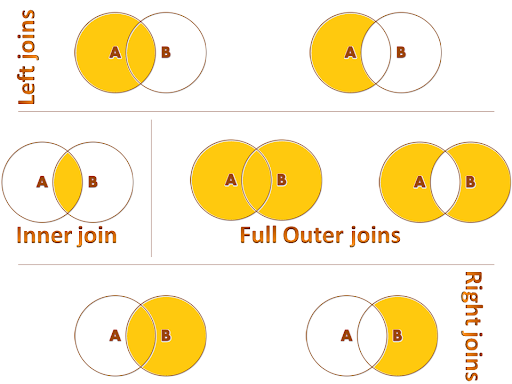SQL JOINS are crucial for combining data from multiple tables, allowing for complex queries and insights. This guide covers various types of JOINS, ensuring you grasp the fundamentals and can apply them effectively.

Key Types of SQL JOINS:
INNER JOIN: Selects rows with matching values in both tables.
Use case: To find all students enrolled in courses, combining students and enrollments tables.
SELECT a.name, b.title FROM students a INNER JOIN courses b ON a.course_id = b.id; LEFT JOIN: Selects all rows from the left table, and matched rows from the right table.
Use case: To list all students, including those not enrolled in any courses.
SELECT a.name, b.title FROM students a LEFT JOIN courses b ON a.course_id = b.id; RIGHT JOIN: Selects all rows from the right table, and matched rows from the left table.
Use case: To list all courses, including those with no students enrolled.
SELECT a.name, b.title FROM students a RIGHT JOIN courses b ON a.course_id = b.id;FULL OUTER JOIN: Selects rows with a match in either table.
Use case: To list all students and courses, showing matches where possible.
SELECT a.name, b.title FROM students a FULL OUTER JOIN courses b ON a.course_id = b.id;SELF JOIN: Joins a table to itself.
Use case: To find pairs of employees in the same department.
SELECT e.name, e.age FROM employees e SELF JOIN departments d ON d.department_id = e.id; CROSS JOIN: Produces a Cartesian product of the tables.
Use case: To combine each student with every course.
SELECT a.name, b.title FROM students a CROSS JOIN courses b;By mastering these SQL JOINS, you’ll be able to handle complex queries and derive meaningful insights from your datasets. For more detailed examples and use cases, visit our full guide and elevate your SQL proficiency!
For more on SQL, read on SQL basic syntax, data constraints, aggregate functions and more.


